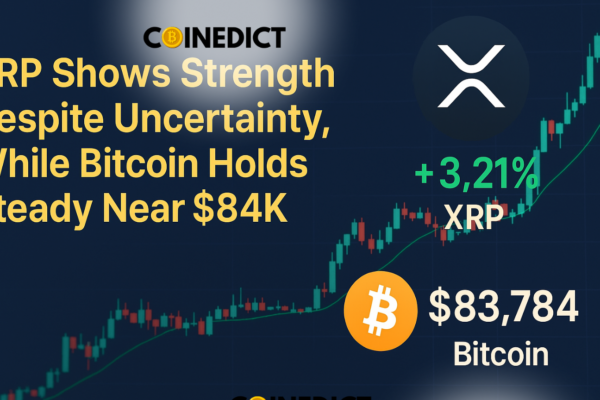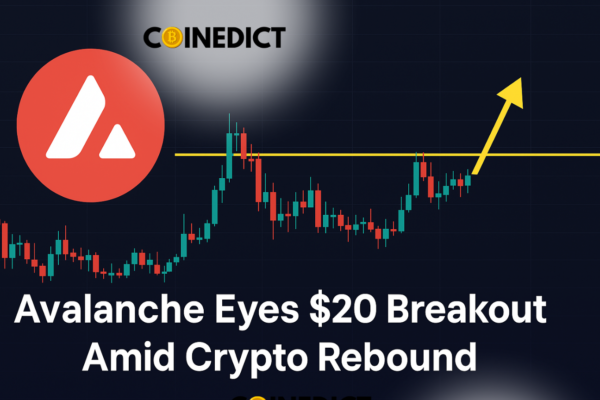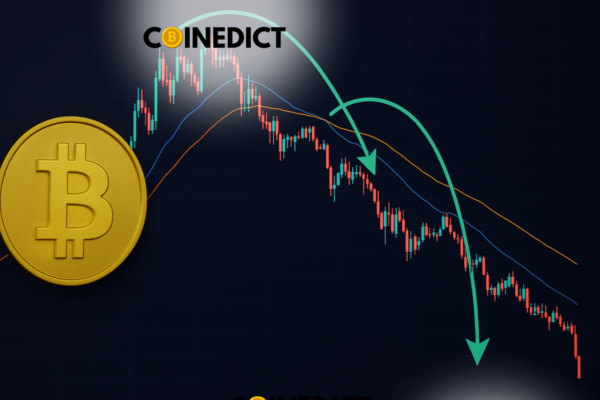
Bitcoin Could Drop to $38K? Analyst Warns Bigger Dip May Be Coming
Just when investors thought Bitcoin had hit its bottom at $74,000, a leading crypto analyst is calling for even lower prices ahead — possibly all the way down to $38,000. Certified technical analyst Tony Severino believes we haven’t seen the worst yet. According to his latest market outlook, Bitcoin might fall between $38K and $42K before finding solid ground. And no, he’s not panicking — in fact, he says this move is totally normal. What’s Behind the Prediction? Severino uses something called the Elliott Wave Theory, a technical analysis method that maps price movements in waves. He says Bitcoin is currently going through a correction phase, which typically has three waves (A, B, and C). So far, Wave A has played out. Now, Bitcoin could bounce back to around $62K–$65K (Wave B), before a final dip takes it to that $38K–$42K range (Wave C). This isn’t the first time Bitcoin has followed this kind of pattern. In past market cycles — including the 2017 and 2020 corrections — similar structures played out before the next big bull run. The Death Cross Warning Severino also points to a bearish chart signal called the Death Cross, where the short-term moving average drops below the long-term one. It’s a classic sign of continued weakness in the market. Still, he doesn’t think it’s all doom and gloom. He suggests this phase is part of a healthy long-term cycle that could set Bitcoin up for growth again — especially as we move closer to the next halving event in 2026. What Does This Mean for Investors? While a drop to $38K sounds scary, Severino believes it’s a temporary correction. He sees it as part of Bitcoin’s natural rhythm — sharp ups, hard resets, and then new highs. If history repeats, long-term holders might end up being rewarded for their patience. But in the short term? Things could get bumpy.

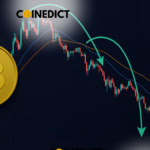






 Market at a GlanceAccording to CoinMarketCap, the total value of all cryptocurrencies dropped nearly 5% over the past 24 hours, pulling the market cap down to $2.42 trillion. Trading activity also cooled off significantly, with volumes dipping over 36%, a sign that traders might be pausing to figure out their next move. Bitcoin still leads with a dominance of 62.6%, despite falling 4.5% to roughly $76,300. Meanwhile, Ethereum saw a bigger drop — down more than 9% to about $1,447, making it the hardest-hit major token of the day. Solana, often spotlighted for being Trump’s crypto favorite, is trading around $105, while Tether remained steady, doing its job as a stablecoin amid the chaos.
Market at a GlanceAccording to CoinMarketCap, the total value of all cryptocurrencies dropped nearly 5% over the past 24 hours, pulling the market cap down to $2.42 trillion. Trading activity also cooled off significantly, with volumes dipping over 36%, a sign that traders might be pausing to figure out their next move. Bitcoin still leads with a dominance of 62.6%, despite falling 4.5% to roughly $76,300. Meanwhile, Ethereum saw a bigger drop — down more than 9% to about $1,447, making it the hardest-hit major token of the day. Solana, often spotlighted for being Trump’s crypto favorite, is trading around $105, while Tether remained steady, doing its job as a stablecoin amid the chaos.  What Experts Are SayingMany analysts believe this sharp sell-off is directly linked to the rollout of Trump’s 104% tariffs on Chinese goods, fueling fears of a renewed global trade war. “It seems like people have given up on any major crypto comeback — at least for the first half of this year,” said Sean McNulty from FalconX. He pointed out that traders are increasingly protecting themselves with bearish positions on Ethereum and Solana — not a great short-term sign. Riya Sehgal of Delta Exchange agreed, saying that the sudden Bitcoin drop below $75K signals just how sensitive digital assets have become to global politics. “Bitcoin is clearly behaving more like a risk asset now — its ties with the equity market are stronger than ever,” she added. Still, Sehgal pointed out a silver lining: long-term holders aren’t budging. Even as prices dip, they’re holding on, suggesting continued belief in crypto’s future as a store of value.
What Experts Are SayingMany analysts believe this sharp sell-off is directly linked to the rollout of Trump’s 104% tariffs on Chinese goods, fueling fears of a renewed global trade war. “It seems like people have given up on any major crypto comeback — at least for the first half of this year,” said Sean McNulty from FalconX. He pointed out that traders are increasingly protecting themselves with bearish positions on Ethereum and Solana — not a great short-term sign. Riya Sehgal of Delta Exchange agreed, saying that the sudden Bitcoin drop below $75K signals just how sensitive digital assets have become to global politics. “Bitcoin is clearly behaving more like a risk asset now — its ties with the equity market are stronger than ever,” she added. Still, Sehgal pointed out a silver lining: long-term holders aren’t budging. Even as prices dip, they’re holding on, suggesting continued belief in crypto’s future as a store of value.  Short-Term Pain, Long-Term Potential?While short-term recovery seems unlikely unless global trade tensions ease, experts aren’t losing hope altogether. Riya highlighted that the recent decision by the U.S. Department of Justice to shut down its crypto enforcement division could signal a shift toward a more crypto-friendly stance — especially with discussions around a national Bitcoin reserve heating up again. Edul Patel, CEO of Mudrex, is also cautiously optimistic: “Bitcoin is finding support near $74,500 and has bounced back to around $76,000. Whales are quietly accumulating, which usually hints at long-term strength.”
Short-Term Pain, Long-Term Potential?While short-term recovery seems unlikely unless global trade tensions ease, experts aren’t losing hope altogether. Riya highlighted that the recent decision by the U.S. Department of Justice to shut down its crypto enforcement division could signal a shift toward a more crypto-friendly stance — especially with discussions around a national Bitcoin reserve heating up again. Edul Patel, CEO of Mudrex, is also cautiously optimistic: “Bitcoin is finding support near $74,500 and has bounced back to around $76,000. Whales are quietly accumulating, which usually hints at long-term strength.”  Bottom LineThe crypto market might be in survival mode for now, but not everyone’s giving up. With whales buying and long-term investors staying put, the current drop may be more of a storm to weather than a sign of collapse. Just don’t expect blue skies until the tariff clouds clear.
Bottom LineThe crypto market might be in survival mode for now, but not everyone’s giving up. With whales buying and long-term investors staying put, the current drop may be more of a storm to weather than a sign of collapse. Just don’t expect blue skies until the tariff clouds clear.

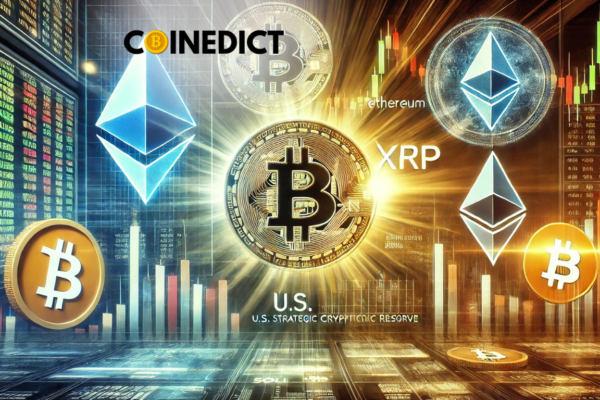




 Thailand’s Crypto Mindset: Open to Growth, Cautious on Payments Here’s how Thailand looks at it: Crypto is an investment tool, not a way to pay for your groceries. The Bank of Thailand has made it clear that using crypto for everyday payments isn’t allowed — the price swings are just too wild, and they could shake up the country’s financial system. But when it comes to blockchain tech and trading crypto in a controlled environment? That’s totally encouraged — as long as the right rules are followed.
Thailand’s Crypto Mindset: Open to Growth, Cautious on Payments Here’s how Thailand looks at it: Crypto is an investment tool, not a way to pay for your groceries. The Bank of Thailand has made it clear that using crypto for everyday payments isn’t allowed — the price swings are just too wild, and they could shake up the country’s financial system. But when it comes to blockchain tech and trading crypto in a controlled environment? That’s totally encouraged — as long as the right rules are followed.  Who’s in Charge of What? Thailand has a few key players in its crypto game plan: They work together to make sure the space is safe and transparent.
Who’s in Charge of What? Thailand has a few key players in its crypto game plan: They work together to make sure the space is safe and transparent.  How It All Started Thailand didn’t just wake up one day and decide to regulate crypto. This has been a years-long process: It’s been a step-by-step journey, but a pretty forward-thinking one.
How It All Started Thailand didn’t just wake up one day and decide to regulate crypto. This has been a years-long process: It’s been a step-by-step journey, but a pretty forward-thinking one.  Rules for Crypto Businesses Want to run a crypto exchange in Thailand? You’ll need to:
Rules for Crypto Businesses Want to run a crypto exchange in Thailand? You’ll need to:  Crypto & Taxes in Thailand Yes, crypto gains are taxed. The more you earn, the higher the rate — up to 35%, based on your income. Some transactions (like on licensed exchanges) get VAT exemptions, but most people still need to report their earnings.
Crypto & Taxes in Thailand Yes, crypto gains are taxed. The more you earn, the higher the rate — up to 35%, based on your income. Some transactions (like on licensed exchanges) get VAT exemptions, but most people still need to report their earnings.  ICOs, NFTs & DeFi — Where Do They Stand? It’s a work in progress — and the government’s taking its time to get it right.
ICOs, NFTs & DeFi — Where Do They Stand? It’s a work in progress — and the government’s taking its time to get it right.  Thailand’s Big Move: A Digital Currency of Its Own Thailand is working on its very own digital currency — kind of like a crypto version of the Thai baht. It’s already been tested for things like retail shopping and even cross-border payments with other countries. The goal? To make money transfers faster, cheaper, and more secure.
Thailand’s Big Move: A Digital Currency of Its Own Thailand is working on its very own digital currency — kind of like a crypto version of the Thai baht. It’s already been tested for things like retail shopping and even cross-border payments with other countries. The goal? To make money transfers faster, cheaper, and more secure.  Adoption Is Growing More Thai people are holding crypto now — almost half of the people who know about it own some kind of digital asset. Businesses are getting more interested, too, especially banks. Still, crypto payments aren’t widely accepted due to strict rules, and the government continues to push for better education around risks.
Adoption Is Growing More Thai people are holding crypto now — almost half of the people who know about it own some kind of digital asset. Businesses are getting more interested, too, especially banks. Still, crypto payments aren’t widely accepted due to strict rules, and the government continues to push for better education around risks.  Not Without Challenges No system is perfect, and Thailand’s crypto space has its hurdles:
Not Without Challenges No system is perfect, and Thailand’s crypto space has its hurdles: 